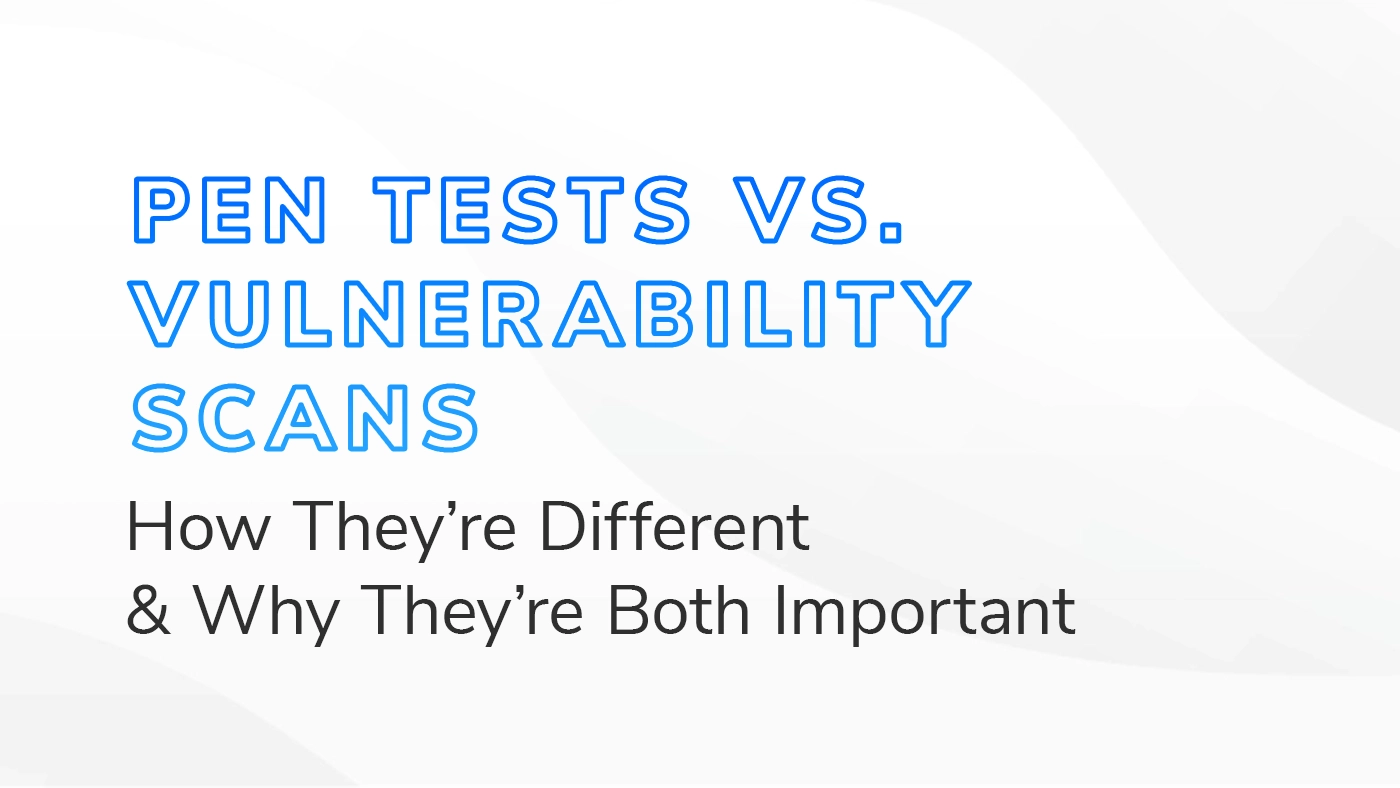Penetration Testing vs Vulnerability Scanning
- Kristen Hubbard - Penetration Tester & Megan Soat - Director of Cybersecurity
- Updated: Oct. 3, 2024

Penetration testing and vulnerability scanning are different services. While these services have some similarities, and the two terms are often used interchangeably, they serve two distinct purposes.
Understanding the differences between vulnerability scanning and penetration testing—and why both are important parts of a strong cyber defense—will help you make the best decisions for your business.
What Is Vulnerability Scanning?
Vulnerability scanning is an automated process that uses tools to scan your network, applications, and systems to identify potential security weaknesses.
Vulnerability scanning flags issues like outdated software, missing patches, or other system weaknesses. This is an important first step in identifying security gaps, but it only tells you what could be wrong—not what could actually be exploited.
As an automated service, vulnerability scanning relies more on the technology than the individual deploying the scan. The effectiveness of a vulnerability scan depends on properly scoping the process. It is important to work with an expert to identify which devices to target and decide between authenticated scans (acting as a system user) and unauthenticated scans (acting as an outsider). Both have benefits, and the right choice will depend on your organization's needs.

What Is Penetration Testing?
Penetration testing—also known as pen testing or pentesting—is much more comprehensive than a vulnerability scan. It involves simulating real-world attacks to see how your systems would hold up under pressure. A pen test doesn’t look for vulnerabilities—it actively attempts to exploit them to demonstrate how much damage a cybercriminal could do if they gained access.
Penetration testing is a deep, manual process. A security expert—often a third-party ethical hacker—will attempt to breach your system, testing the effectiveness of your existing defenses and uncovering vulnerabilities that automated scans may miss.
For further information on pen testing certifications and the importance of objective pen testers, continue reading or click here.
Vulnerability Scanning vs Penetration Testing
While vulnerability scanning and penetration testing both aim to improve your security, they’re just simply not the same.
- Automation vs. Human Analysis: Vulnerability scans are automated and designed to identify potential weak spots. Penetration testing involves manual efforts to exploit those vulnerabilities.
- Frequency: Vulnerability scans are typically run regularly (monthly or quarterly). Penetration tests are often performed annually or after significant infrastructure changes.
- Scope: Vulnerability scans give you a high-level view of potential weaknesses, while penetration tests provide deeper insights into the impact of those vulnerabilities.
Think of it this way: a vulnerability scan is like a routine medical check-up, identifying risk areas, while a penetration test is like a stress test, seeing how those risk areas respond under pressure.

When to Use Penetration Testing and When to Use Vulnerability Scanning
For a comprehensive security strategy, both tools should be used together.
- Vulnerability Scanning: Use this for routine maintenance of your systems. It’s a quick way to catch low-hanging fruit, such as missing patches or configuration errors.
- Penetration Testing: After making significant changes to your infrastructure or annually as part of a security audit. Pen testing helps identify complex vulnerabilities that could be exploited in a real-world attack.
Objective Penetration Testing
Ensure your penetration testers are independent from the development team to avoid conflicts of interest. Objectivity is crucial so that testers can accurately report any vulnerabilities without bias.
Penetration Testing Certifications
Look for testers with recognized certifications like Offensive Security Certified Professional (OSCP), GIAC Penetration Tester (GPEN), GIAC Web Application Penetration Tester (GWAPT) and Certified Ethical Hacker (C|EH). These certifications demonstrate the skills needed for thorough and effective testing.
Penetration Testing Report Examples
The final report is critical. It should clearly outline compromised data and how the vulnerabilities were exploited. Request a sample report to assess the quality before engaging the tester.
Penetration Testing and Vulnerability Scanning: Different Services with Complementing Features
Though vulnerability scanning and penetration testing serve different purposes, they work together to create a stronger defense. For comprehensive security, we strongly recommend regular vulnerability scans and at least one annual penetration test.
When choosing a security vendor, ensure they clearly understand the differences between these two services. Inconsistent pricing can reflect varying levels of service quality, so use this knowledge to evaluate and negotiate effectively.
Why Work with an IT Partner?
Partnering with HBS simplifies the security testing process. We provide regular scans, in-depth penetration tests, and expert analysis, allowing your organization to stay ahead of potential threats. Let us help you build a tailored, comprehensive security approach that evolves with your needs.
Using both vulnerability scanning and penetration testing will help you identify and address risks before they can be exploited.
Let HBS help you safeguard your organization by conducting regular scans and tests, interpreting the results, and crafting a tailored approach to secure your systems.






